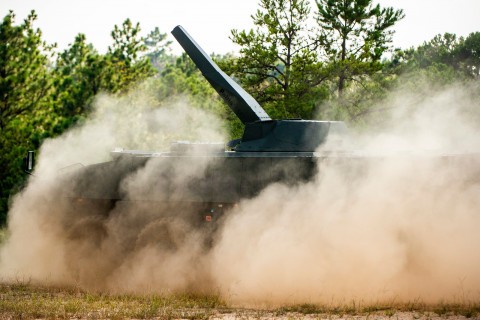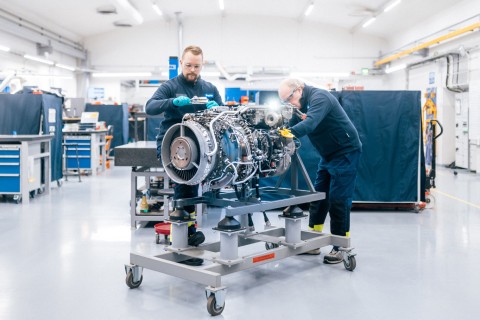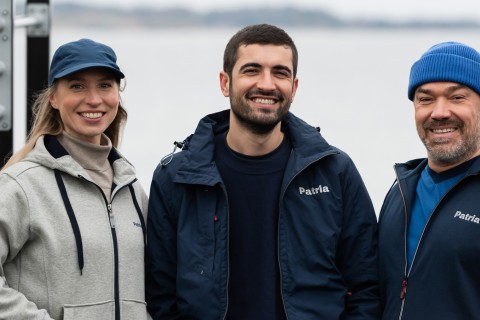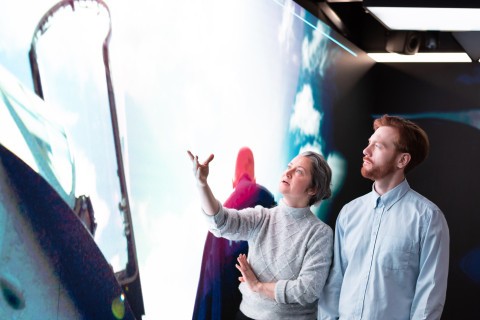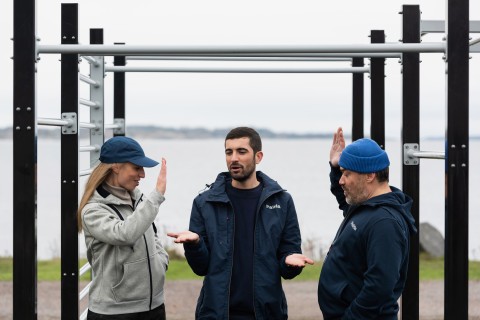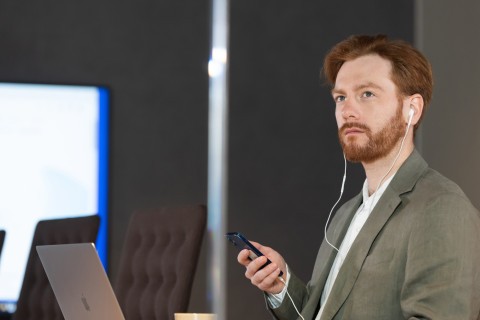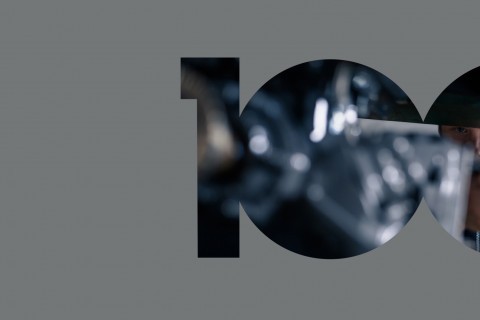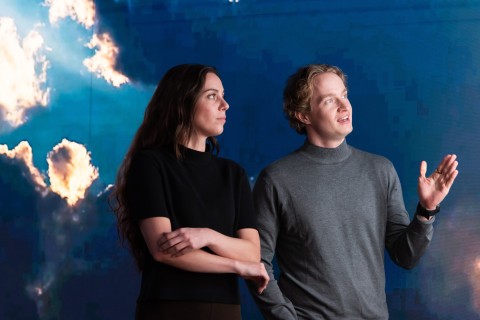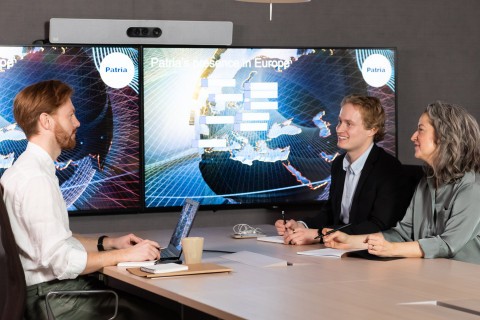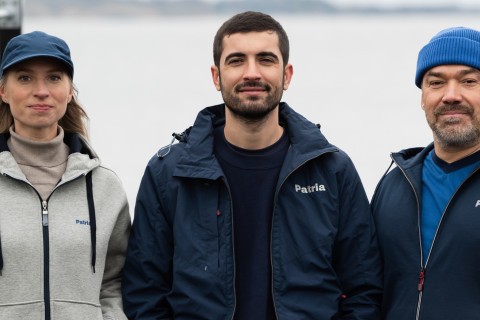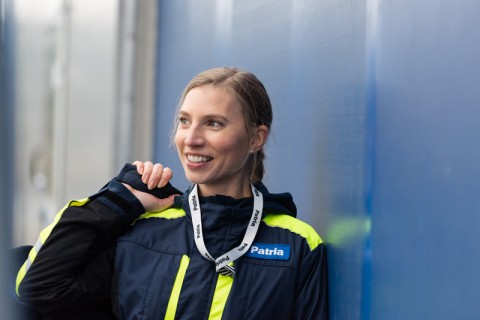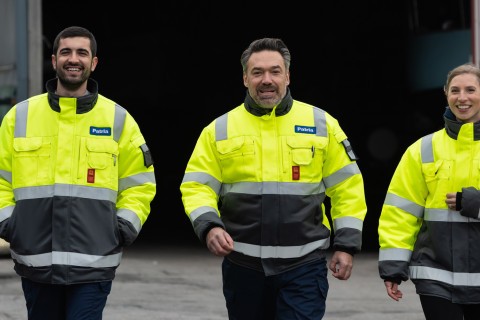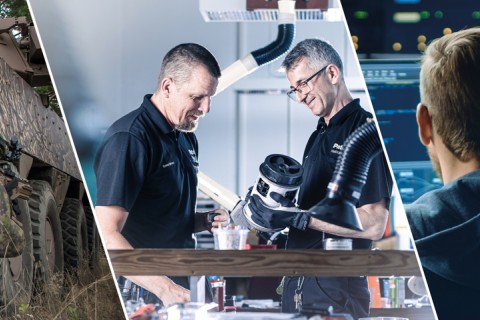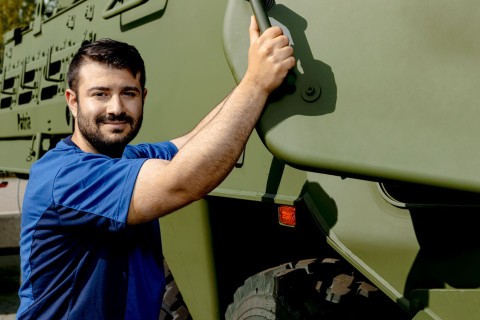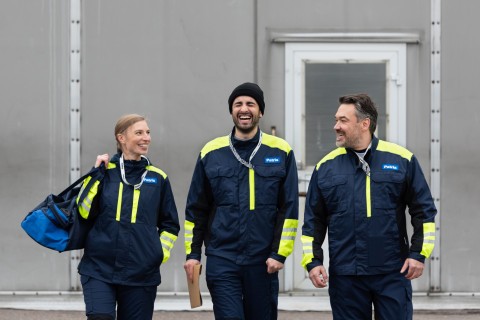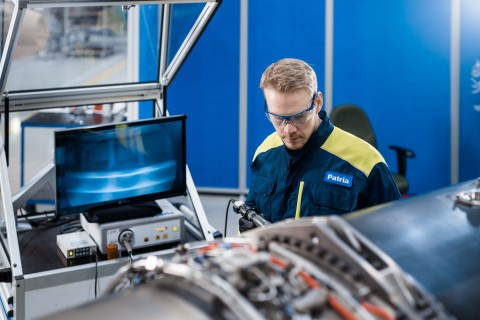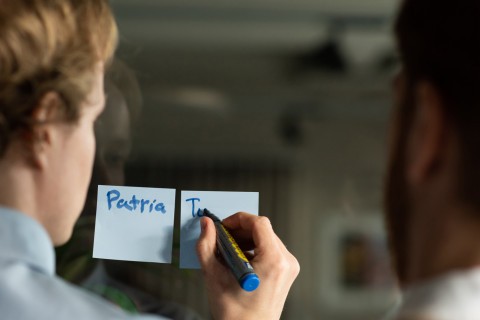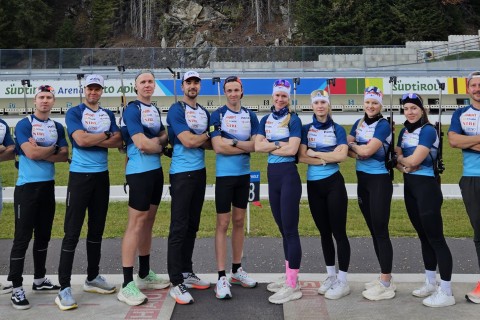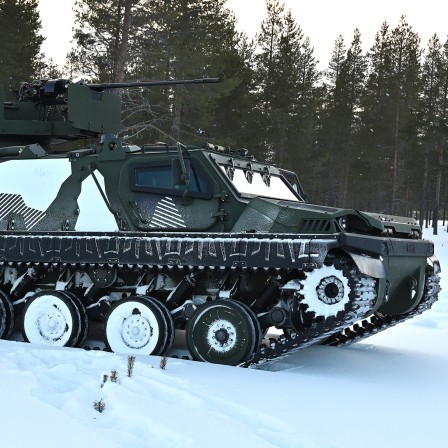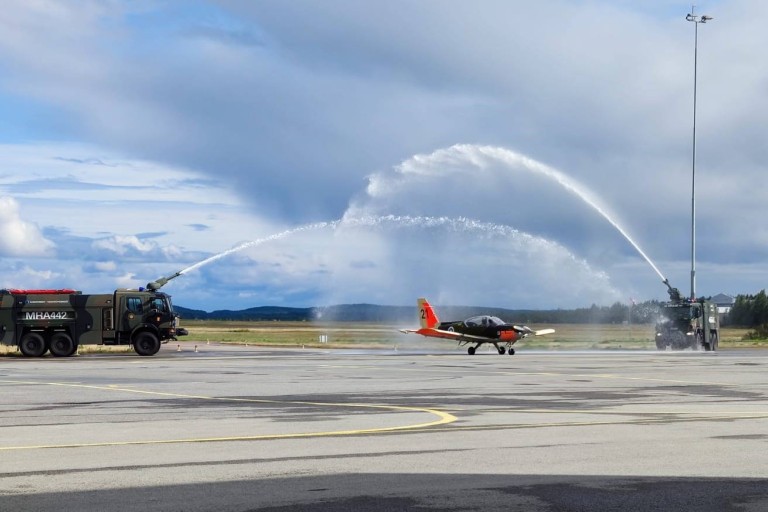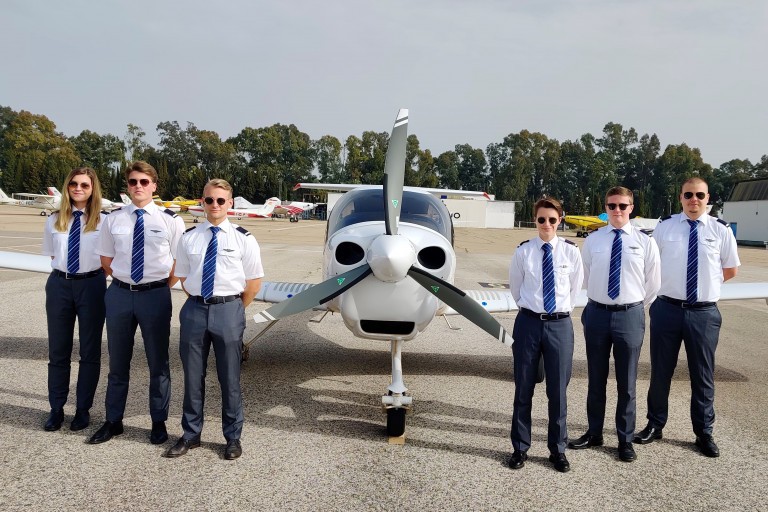

Three training aircraft ferried from Pirkkala to Cordoba in four days
5.9.2019
The decisive factor behind the change was the Spanish weather, which enables efficient training throughout the year and significantly increases utilisation of Patria´s fleet of training aircraft. Cordoba was chosen from a number of promising candidates, as it was deemed the most functional overall. As soon as a director was chosen, the wheels were quickly set in motion and Patria’s Michael Hirvonen moved to Spain in April to prepare the new training centre. The plan calls for the launch training in September 2019. Planning of ferry flights from Pirkkala to Cordoba was also initiated, led by Harri Pottonen. This meant several work-filled weeks and acceptance of two new DA40 planes from Diamond Aircraft´s Wiener Neustad factory in Austria before the actual ferry flights carried out by Harri Pottonen, Kim Kuikka, Teppo Alijoki, Eetu Rauhala, Tero Tuominen and Matti Ketonen. Here is Teppo Alijoki’s notes of the four flight days.
Day one
On Monday the 12th of August, three aircraft and six enthusiastic flight instructors were ready for the unprecedented ferry flights from Tampere-Pirkkala to Córdoba in Spain. The flights were scheduled to take a total of four days, split into eight two-to-three-hour legs, and covering a total of more than 2,400 miles. They would rack up a total of just over twenty hours of flight time. Five days were booked for the journey, including one reserve day in case of technical faults or bad weather.
After we had packed the planes, we were able to get down to business, that is, the first leg from Pirkkala to Linköping in Sweden (ESSL). We took off at 07:10 UTC. Before switching to instrument flying, we decided to greet to the staff and students in Pirkkala with a three-plane flyover of Patria’s training centre. And we did indeed find the best-looking hangars in Pirkanmaa!
The first leg went according to the plan without any need to make major changes to the planned route. Weather conditions were cloudy for part of the leg, and at our flight level (FL100 = 10.000 feet, approximately 3 km) we were flying against strong winds of 35 knots. Because of this, the flight lasted just over three hours (plus delays on the ground). We landed safely in Linköping at 10:15 UTC before thunderclouds started gathering over the airfield. Harri Pottonen paid our landing fees during the heaviest downpour and the crews supervised the refuelling of the aircraft. After the rain stopped, we were able to take off for the next destination, carrying lunch bags onboard, as we knew that the Kolding-Vamdrup (EKVD) airport in Denmark would close at 15:00 UTC. The planes were in the air again with the same crews after only an hour on the ground, and we returned to flight level of FL100. Both radio traffic and our flight went without a hitch, with flexible routing and Swedish precision. Our route managed to avoid the worst thunderstorms, and we flew over the sea with full confidence in both our aircraft and engines and our own professional skill. We landed on Kolding-Vamdrup’s short runway (1,006 metres) just after 14:00 hrs in a strong crosswind. We had plenty of time to pay our landing and parking fees, and to refuel our aircraft before the airport closed. The aircraft were covered up and left at the airport at the mercy of a twenty-knot wind, while the crews went to their hotels in the town and enjoyed a well-deserved dinner. Then we had an early night to gather our strength for the next day.
Day two
On Tuesday 13 August, the crews woke up early, had breakfast and set out for the airport. After a quick morning briefing and some preparations, including an inspection of the aircraft, we asked for route clearance for the next leg of our journey, from Kolding-Vamdrup to Siegerland in Germany (EDGS). We were given clearance for our traditional flight level of FL100, and were in the air at 07:00 UTC. The weather was cloudier than on the previous day. It was a few degrees below zero at our flight level, so two crews requested an altitude change to a lower flight level of FL070, while one determined crew requested FL080. We landed in Siegerland by 10:00 hours UTC. This airport is located at a reasonably high altitude above sea level, with a RNP (Required Navigation Performance) minimum of 2,260 feet compared to Pirkkala’s ILS (Instrument Landing System) minimum of 570 feet. The airport personnel handled refuelling with German efficiency. This meant that the crews were able to visit the airport’s canteen, where we enjoyed lunch in our flight overalls – at tables not only covered with white tablecloths but also decorated with candles and roses. These surroundings gave an extra special flavour to our meal.
Afterwards, the journey continued. Takeoff slots were different than before. We took off individually with 20–30 minute intervals, without a hitch. Our next destination would be Bern Belp in Switzerland (LSZB), guided by the crew comprising of Kim Kuikka and Teppo Alijoki. This pair were the only ones who got to do a City Circling to the opposite end of the airport after their ILS approach. Others had to settle with a direct ILS approach, albeit a steep four-degree glide path. The scenery around the airport was breathtaking – a completely new experience for us all. Compared to what we had encountered previously, there was a number of small planes using this airport. Our aircraft were refuelled and covered up, so they would be ready and waiting for us in the morning. Our departure ended up being delayed, as we had to sort out some tax issues relating to refuelling. The Point of Contact in Finland was our new CFI (Chief Flight Instructor) Janne Pöykiö, and thanks to Finnish perseverance and limitless language skill, even this issue was resolved admirably and the crews got to eat and rest.
Day three
On Wednesday the 14th of August, we woke up to the sun shining in clear skies. A taxi drove the crews to the airport, where the aircraft were awaiting their pilots amid beautiful scenery. This is flying at its best. Our destination for this leg was Montpellier in France (LFMT). Here we encountered the local air traffic control in French, and the controllers did their best to explain things to us in English, point by point. Despite of this language barrier, we were able to land in Montpellier on time. We had not planned to refuel or have lunch at the airport, so we made only a quick stop – just long enough to pay our landing fees and visit the bathroom. We were finally encountering some pleasant temperatures: +27°C on the ground and 6–7°C at our flight level of FL100. Therefore, freezing was no longer a factor and we were able to to focus on breaking the language barrier.
Our takeoff from Montpellier did not go quite as smoothly as we'd hoped for. The crew comprising Eetu Rauhala and Teppo Alijoki did not make it into the air on their first attempt due to an indicated instrument fault while going through the check lists. With the aid of the French air traffic controllers and a phone call home to CAMO in Finland, we were able to resolve the fault and the last crew was able to join us at flight level FL100 for the next leg to Reus in Spain (LERS). The thermometer was showing 32°C when we landed in Reus, and the first two crews got to show their passports and ‘Paper of Fly’ (pilot licenses) to the local police. After the aircraft had been refuelled, we taxied to Diamond Aircraft´s local Service Center´s hangar, where our planes would spend the night. The maintenance personnel gave us a lift to our hotel, and we managed to have dinner before 16:30 UTC even though the majority of the local restaurants had not even opened yet. The locals only arrived when we were leaving to go to bed.
The fourth and final day
Thursday the 15th of August may have been our last day, but it was not uneventful. After we left the hotel, we went through the airport security inspection under the warm Spanish sun. Although it was a national holiday in Spain, we were airborne smoothly by 08:00 UTC. Clearance was given to flight level FL080 only, even though several crews would have wanted to fly higher. But luckily visibility allowed a lower flight level. Once again, we encountered unbelievable sceneries on our route from Reus to Madrid’s Cuento Vientas airport (LECU).
We purposefully remained under Madrid’s control for as long as possible, even though we received clearances to descend several thousand feet at a time. Eventually, we all had to decent to VFR cruising altitudes and reach our destination using the Spanish VFR chart. Kim Kuikka and Harri Pottonen boldly volunteered to go first and warned the rest of us about enormous eagles and other large birds that they had to avoid. We found the correct airport but didn’t manage to land without go-arounds... Although it was a national holiday, the airport was extremely busy. There were training flights run by several schools at regular intervals, and we couldn't seem to find any parking spaces for our planes on the apron. We only had forty-five minutes left until our scheduled takeoff time, and we still had to deal with the local authorities. We knew that air traffic control at our final destination, Cordoba (LEBA), was only open until 13:00 UTC, and we had planned a flyover over the city in formation before landing.
During the last leg, we were mainly within visual range of each other, first in VFR and finally in IFR at FL100, FL 080 and FL100. Before reaching Cordoba, we cancelled our IFR clearance and switched to VFR in order get into a three-plane formation. After this we flew over the city in style, flew further over the airport and broke the formation up in order to land individually. After a safe landing and taxiing, the airport’s fire and rescue vehicles gave us a ‘welcome shower’ of water with their water cannons. Waiting for us were both the airport manager and, naturally, Patria´s Michael Hirvonen. Our aircraft had arrived safely in Cordoba as planned.
Patria Pilot Training is going through many changes and the new base will see its first students in September. With the first three aircraft ferried to their new base, pilot training can now begin in Cordoba.
What did you like about the article?
Thank you for your opinion! You can share the article on social media using the buttons below:
